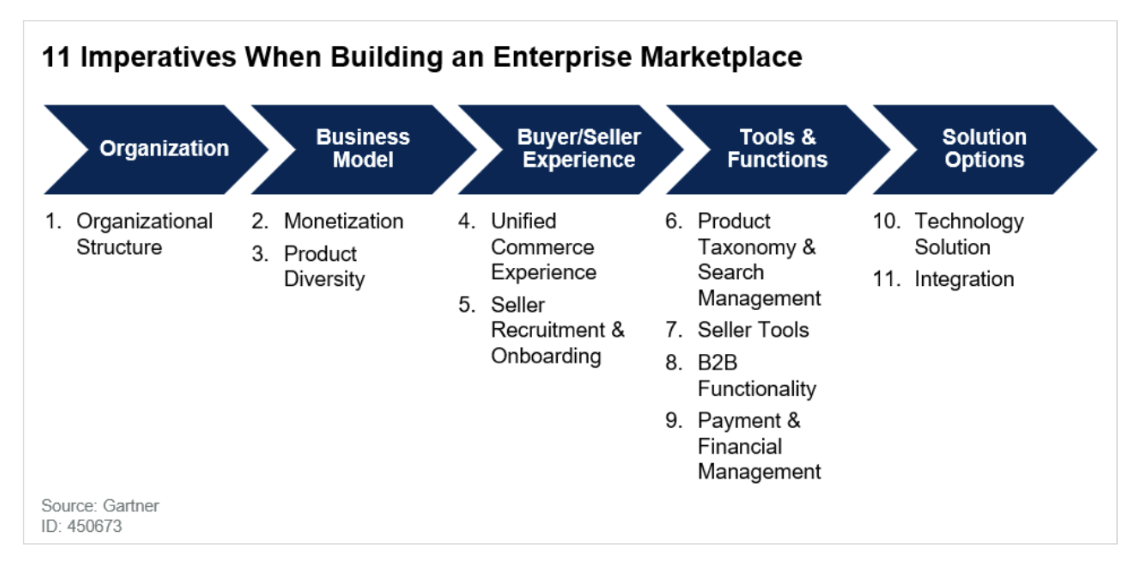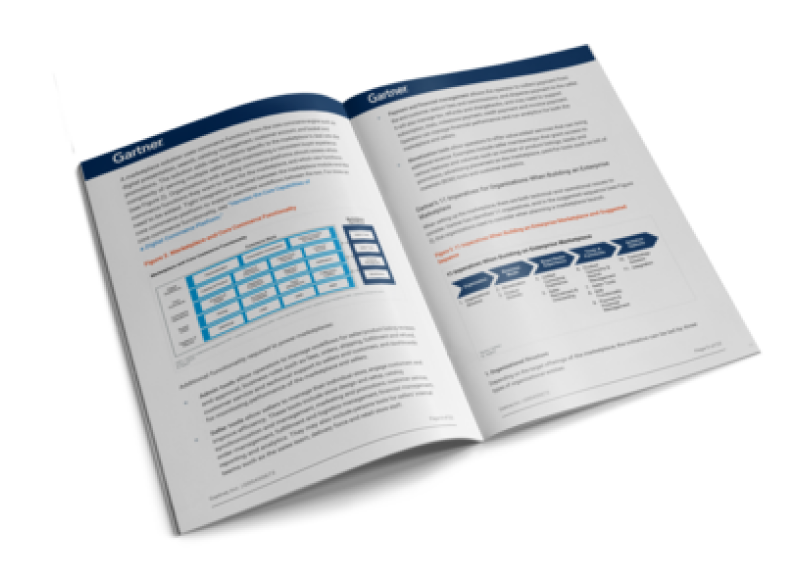We believe Gartner® is at the forefront of understanding and explaining the importance and opportunity presented with enterprise marketplace applications. As defined by the report:
“Enterprise marketplaces are online marketplaces operated by traditional organizations that invite third-party sellers to sell directly to end customers. This contributes to improved engagement for buyers and sellers, better efficiency in the buying/selling processes and supply chain, and better financial results for the organization, with increased and new revenue sources. Enterprise marketplaces contrast with online marketplaces from digital-native companies such as Amazon, eBay and Tmall, and are operated primarily by traditional organizations.”
As enterprise marketplace models continue to gain popularity amongst organizations with digital ambitions, forward-looking operators are incorporating marketplaces, and for good reason. The report forecasts that by 2023, organizations operating an enterprise marketplace for more than a year will typically see at least a 10% increase in net digital revenue as a result.
A common question from businesses looking to set up a marketplace is what are the key technical and operational considerations to ensure a pathway to success. Gartner has identified 11 imperatives, and in the suggested sequence (see Figure 3 below), that organizations need to consider when planning a marketplace launch.
Figure 3. 11 Imperatives When Building an Enterprise Marketplace and Suggested Sequence.

The report offers detailed insights and recommendations under each imperative. Examples include:
Regarding product diversity and brand implications: “Brand implications. The operator needs to determine the scope of the product catalog and whether it wants to add new categories to complement existing ones. It could mean “pushing the envelope” in terms of what an online seller is known for. Many brands have an established reputation based on years of selling within specific categories. Adding new types of products can alter the public perception of the brand. Some companies may find that customers are confused by expanded assortments in new areas and lose trust in the core competency of the brand. At the same time, categories that customers are also seeking may prove to be beneficial.”
Unified Commerce and Fulfillment: “Operators should aim for a unified and consistent buying experience for all sellers and products, and across channels to ensure a level playing field within the marketplace. Many multichannel retailers already have processes for their own products that are not stocked in stores and can extend the program to marketplace sellers. This can not only reduce the incidents of split shipments, thus lowering fulfillment costs, but also improve customer experience as customers receive one delivery for one order.”
Seller Recruitment and Onboarding: “A key value proposition of the marketplace is the wide range of product selections brought by third-party sellers. Organizations should make detailed plans as to the product assortment they want to feature and the types of sellers/brands they want to recruit”. A robust seller program is what helps jump-start a new marketplace. Gartner found two main areas to consider: 1) ‘’Plan the types of products and sellers to work with’’ and 2) ‘’Set up a dedicated recruitment team to seek qualified sellers.’’
For more great insights from Gartner, get your copy of the 2022 GartnerⓇ Hype CycleTM for Digital Commerce report here, where we’ve been named a Sample Vendor.
Gartner, 11 Imperatives When Building an Enterprise Marketplace, Sandy Shen, Jason Daigler, Refreshed 7 April 2021, Published 10 December 2019
Gartner Hype CycleTM for Digital Commerce, 2022, Sandy Shen, Published 11 July 2022
GARTNER is a registered trademark and service mark of Gartner, Inc. and/or its affiliates in the U.S. and internationally and is used herein with permission. All rights reserved.





